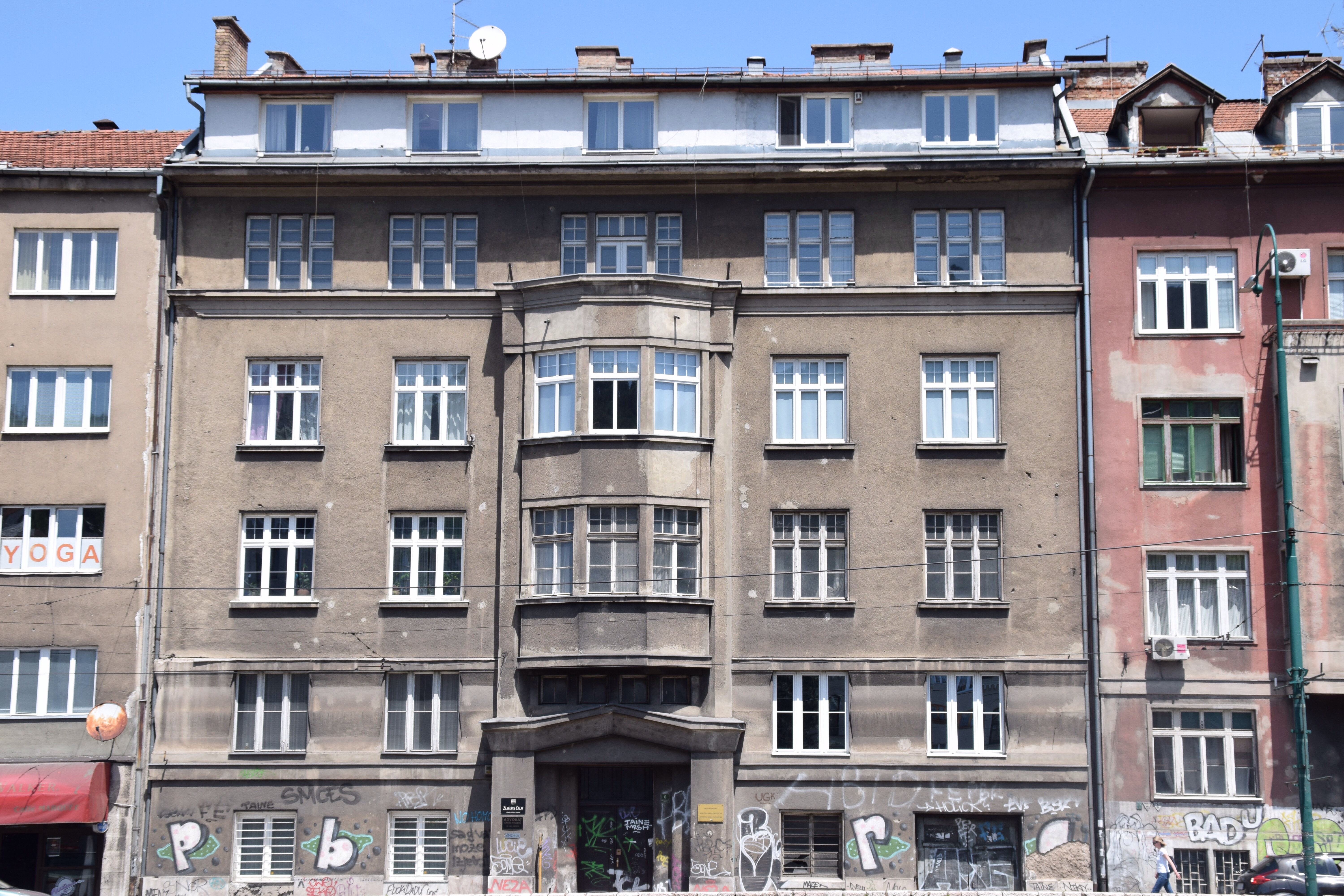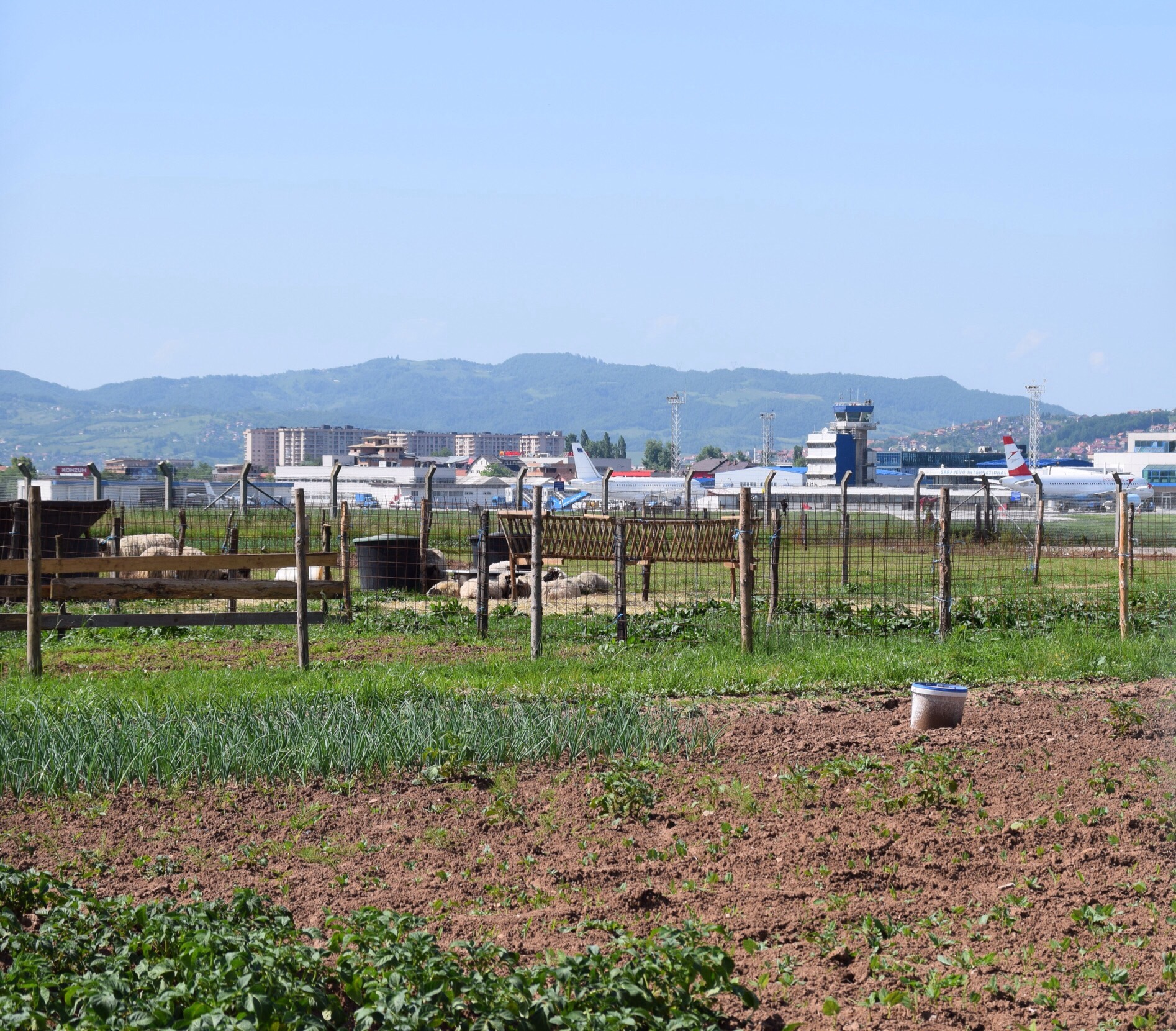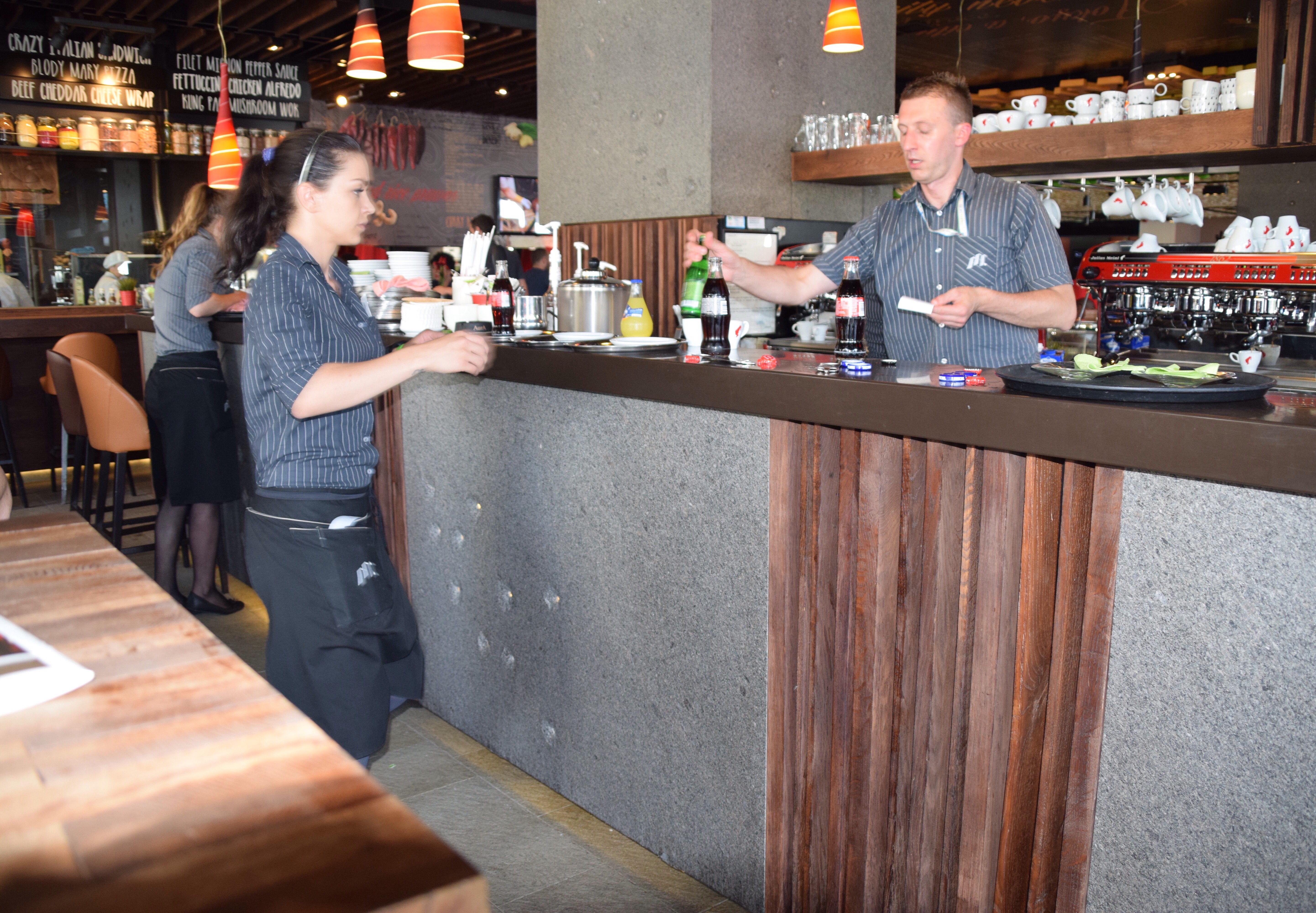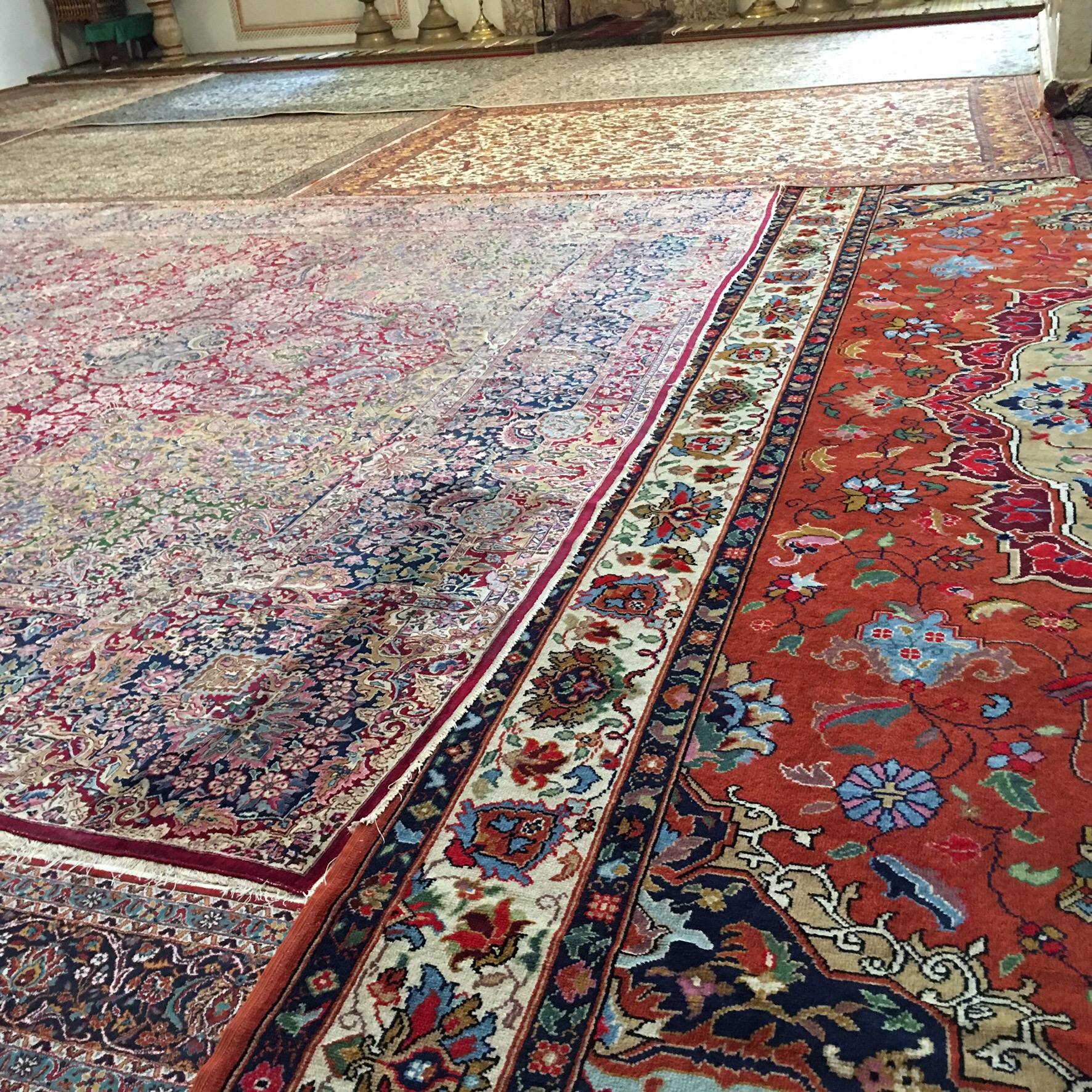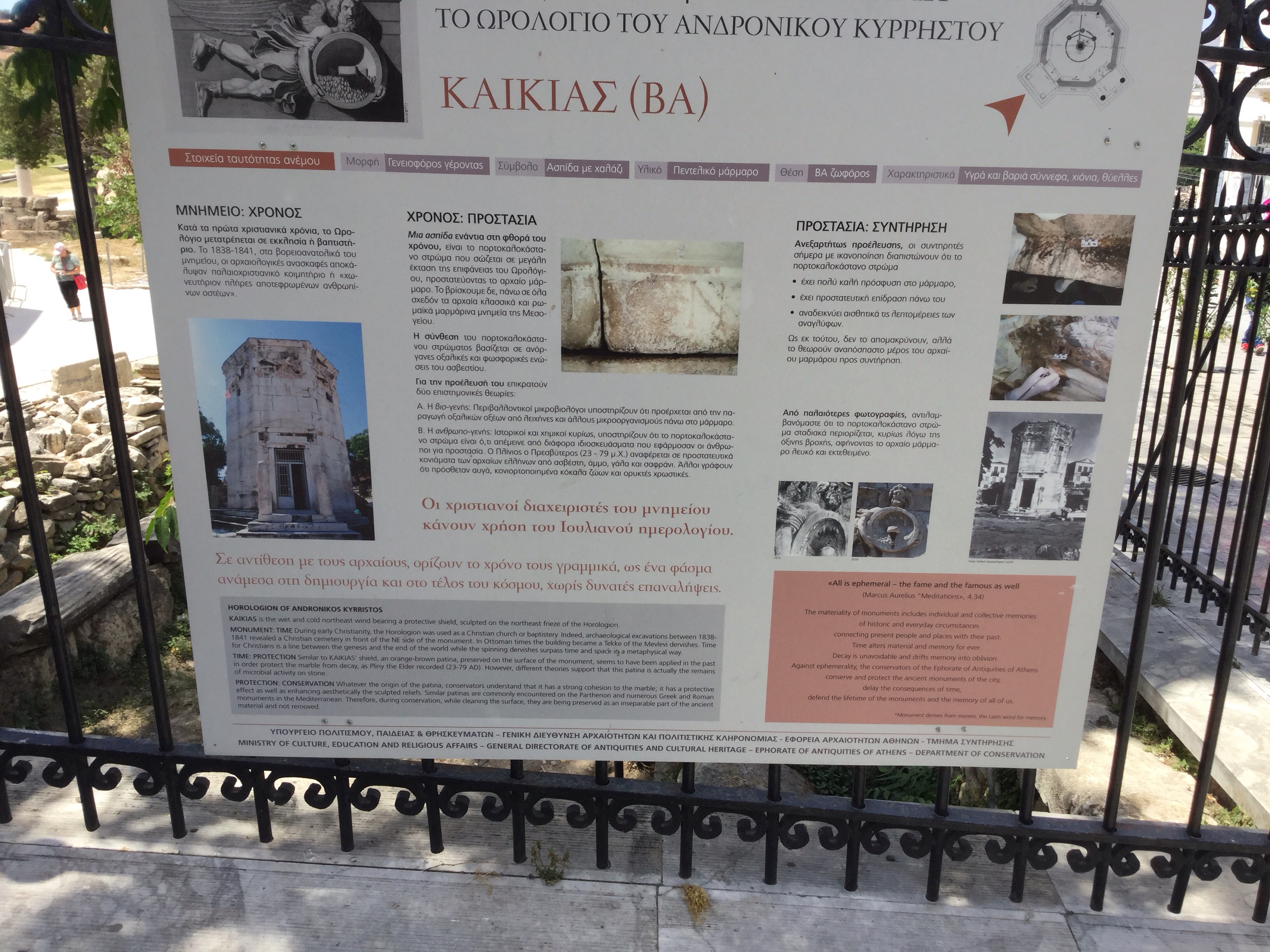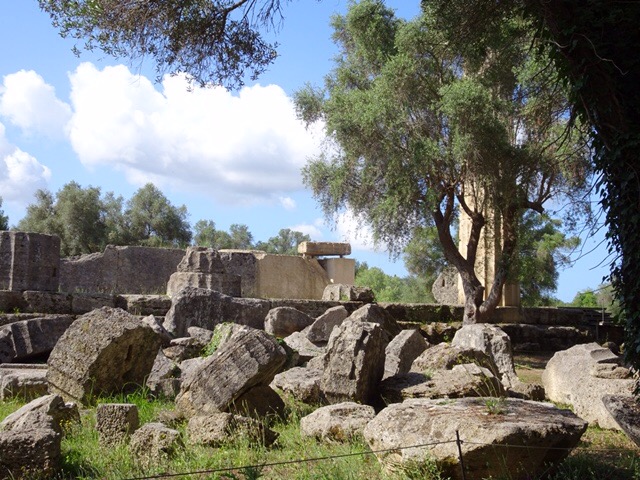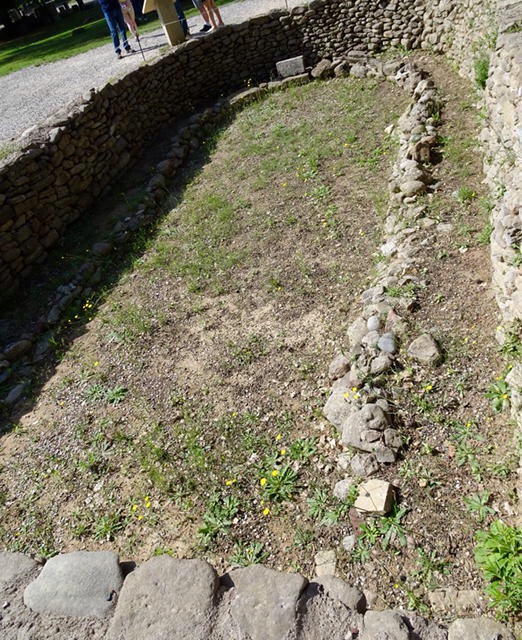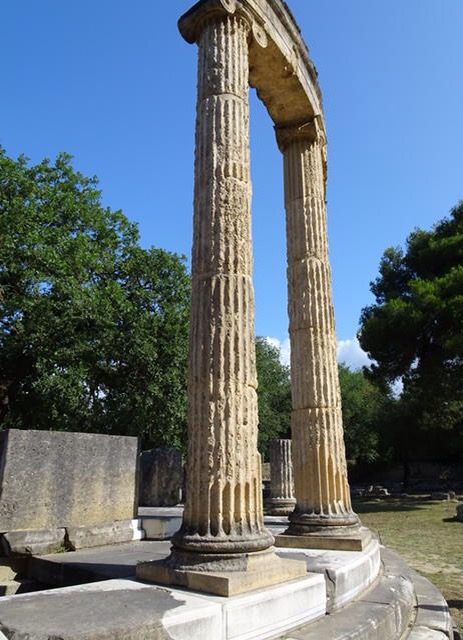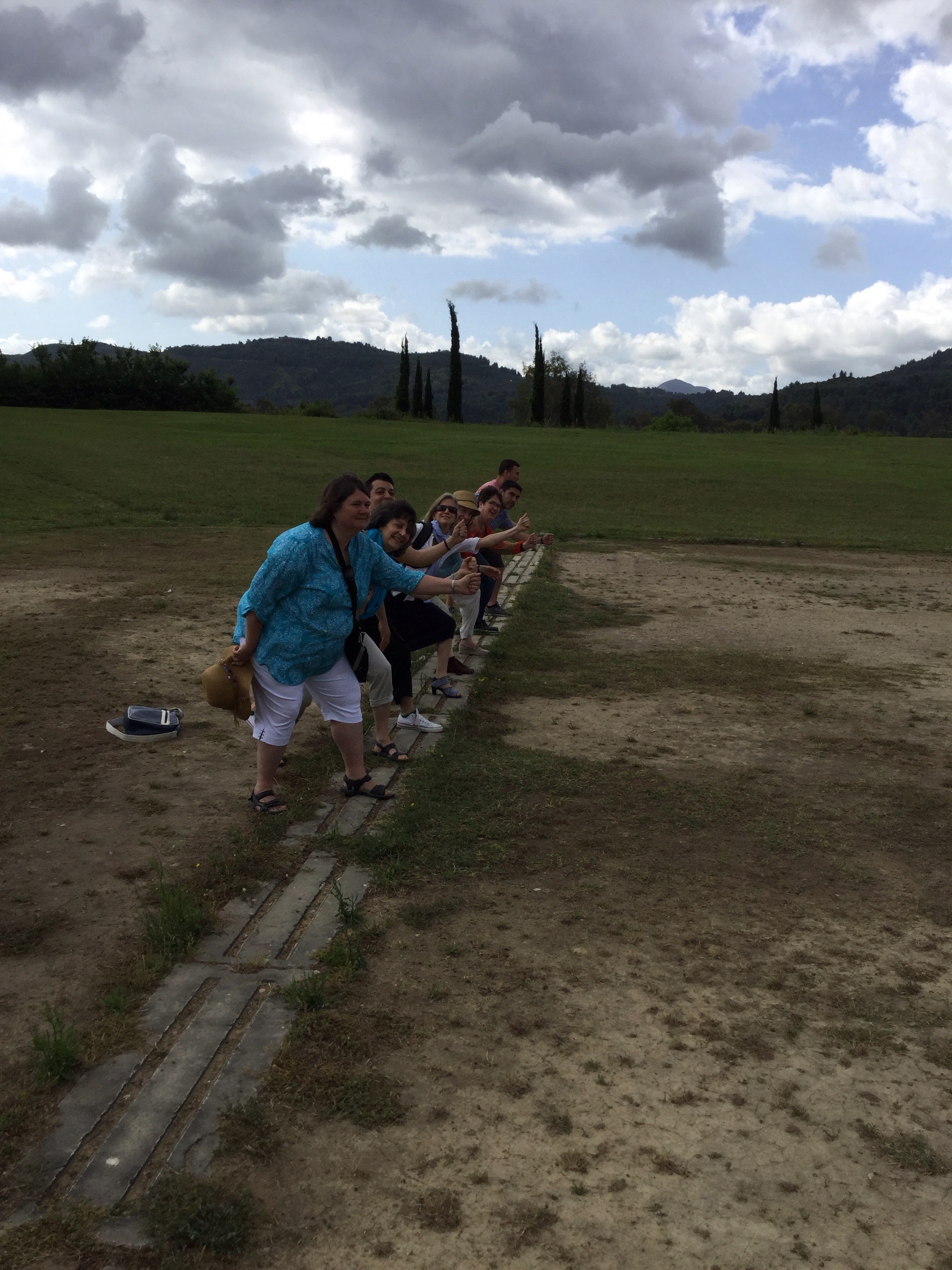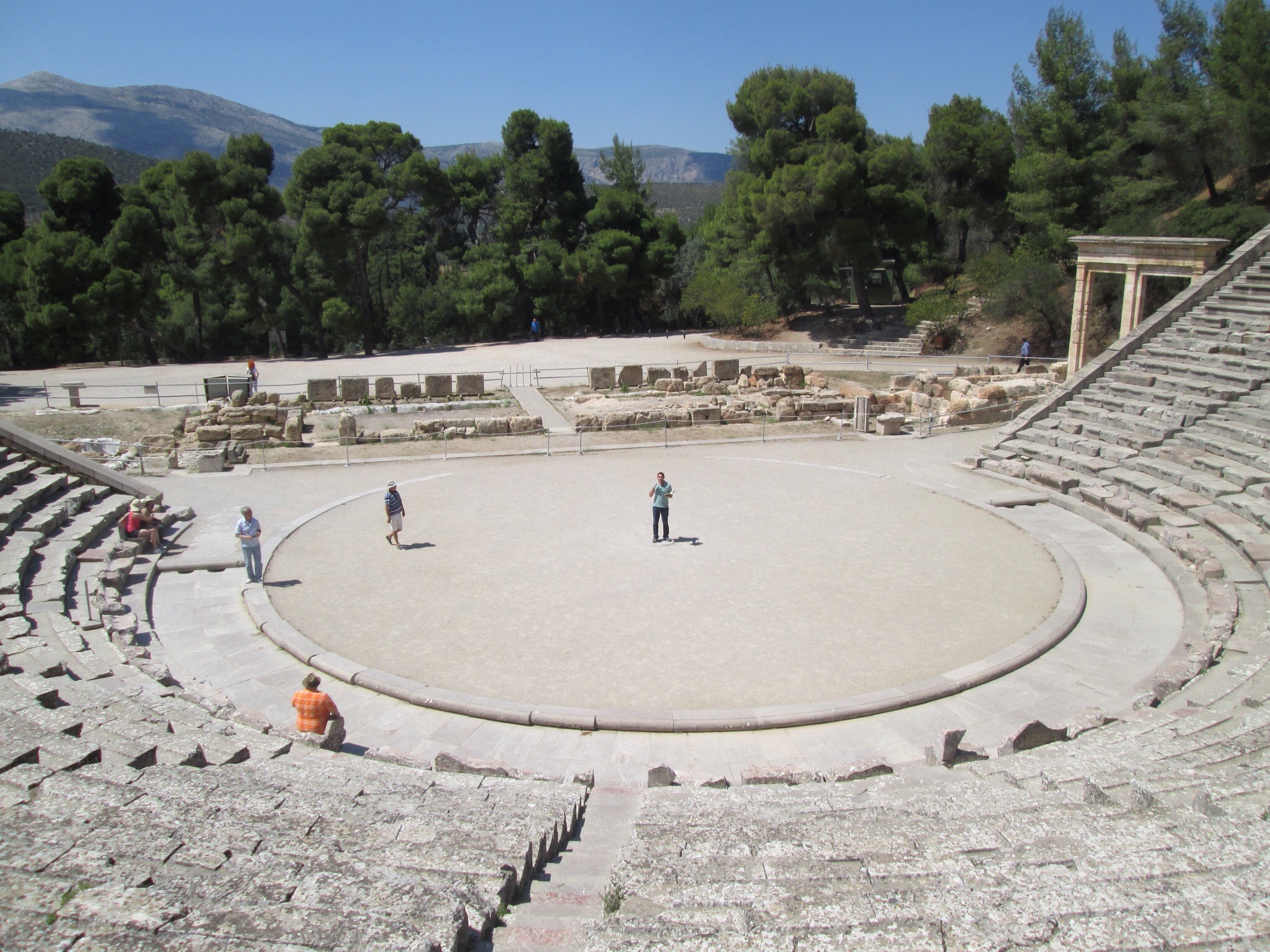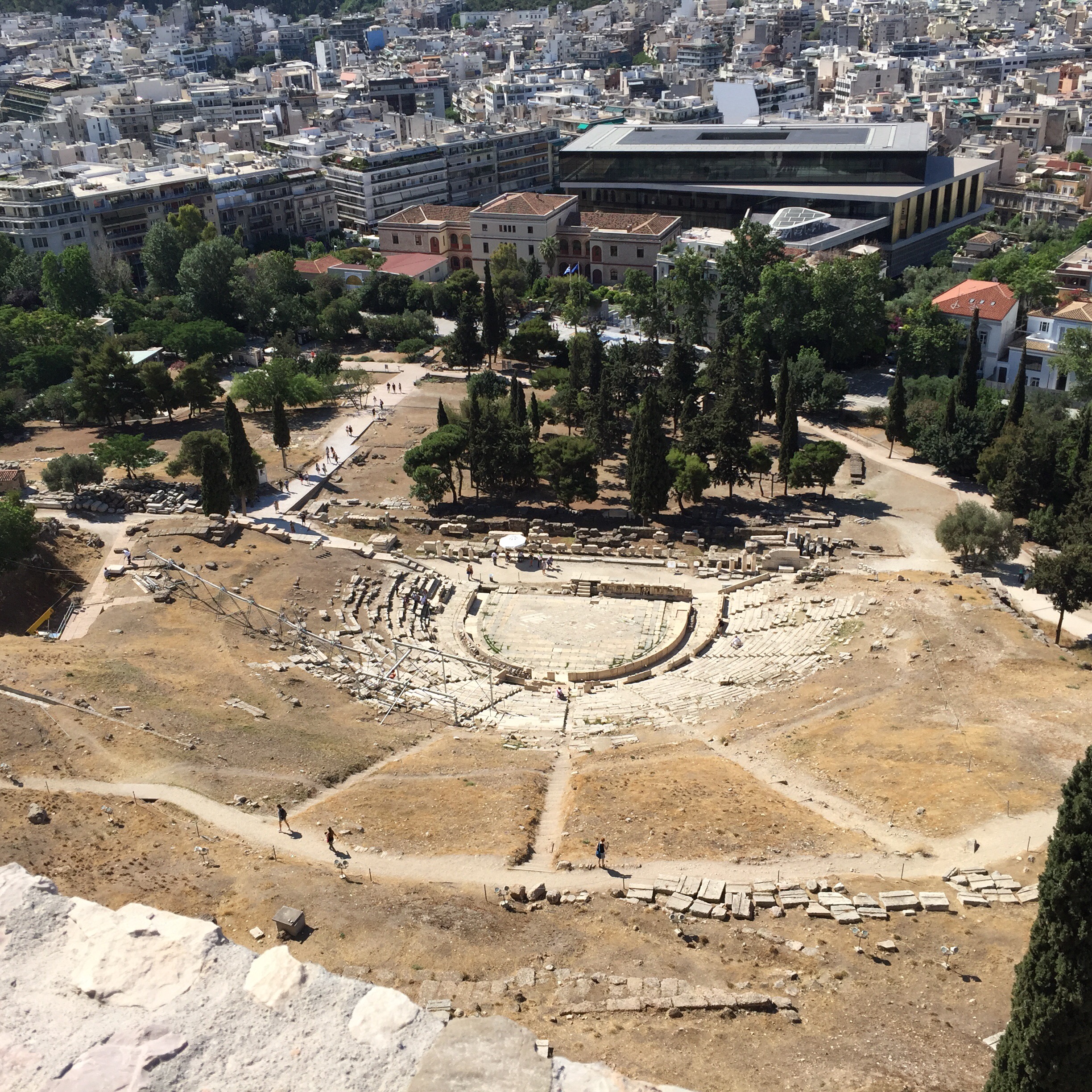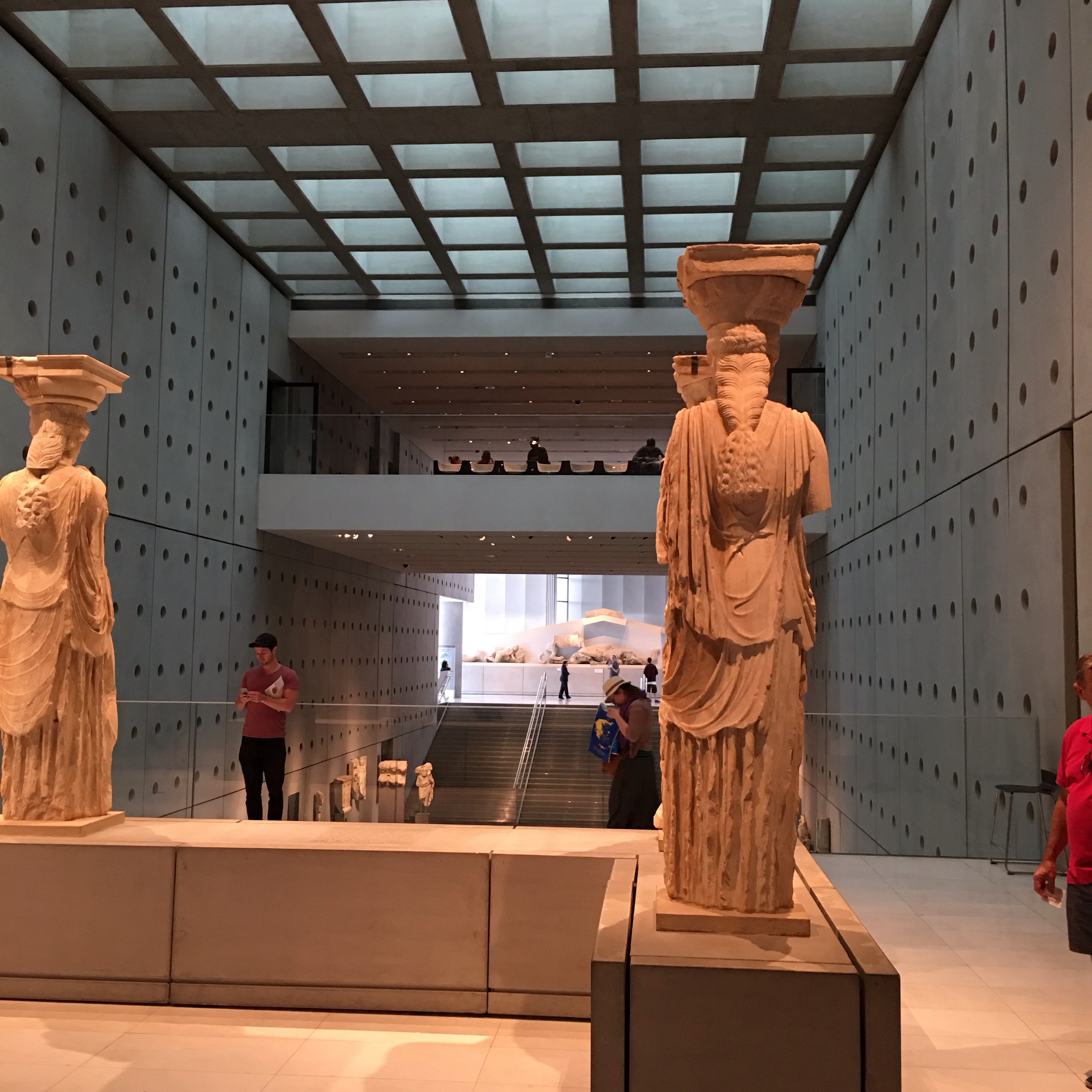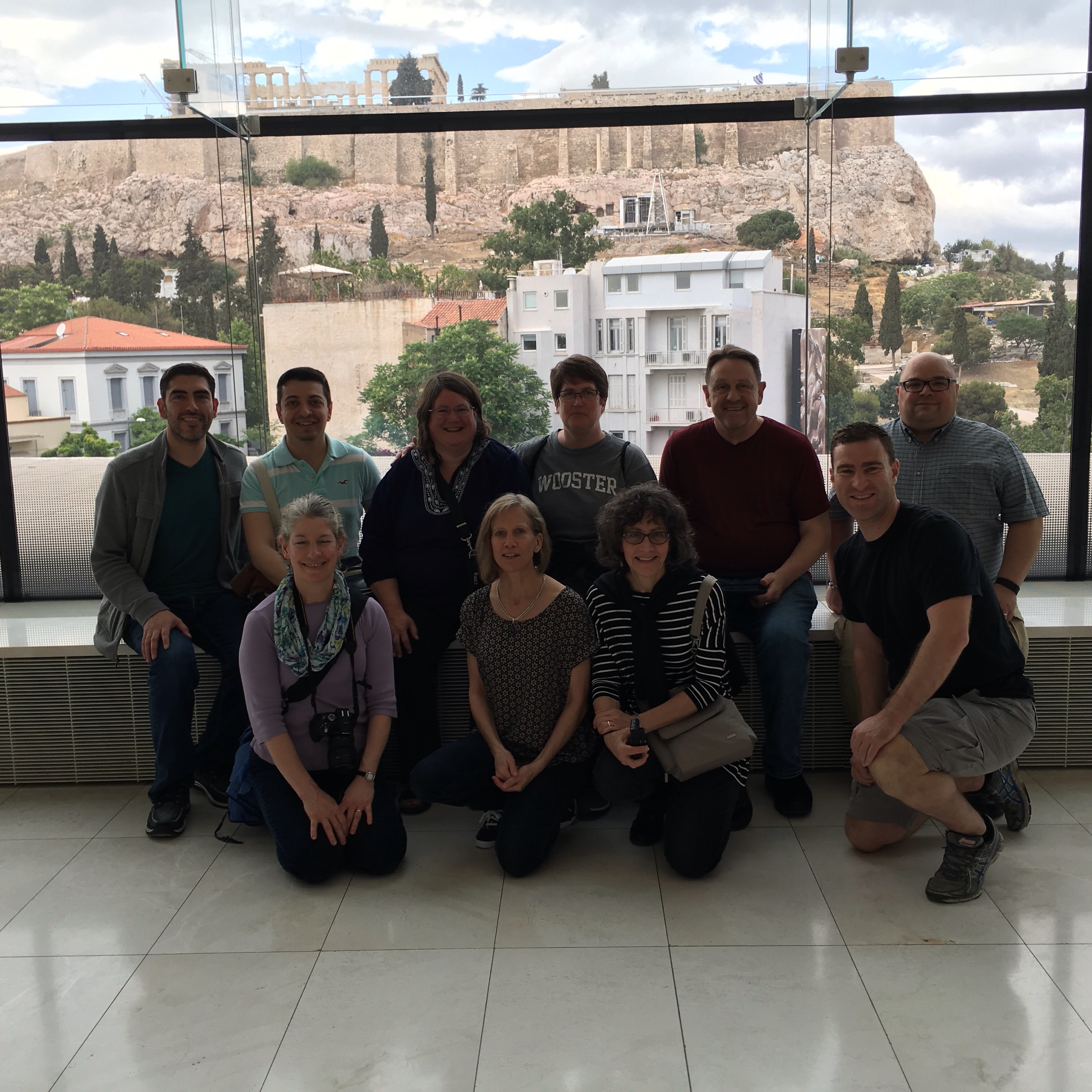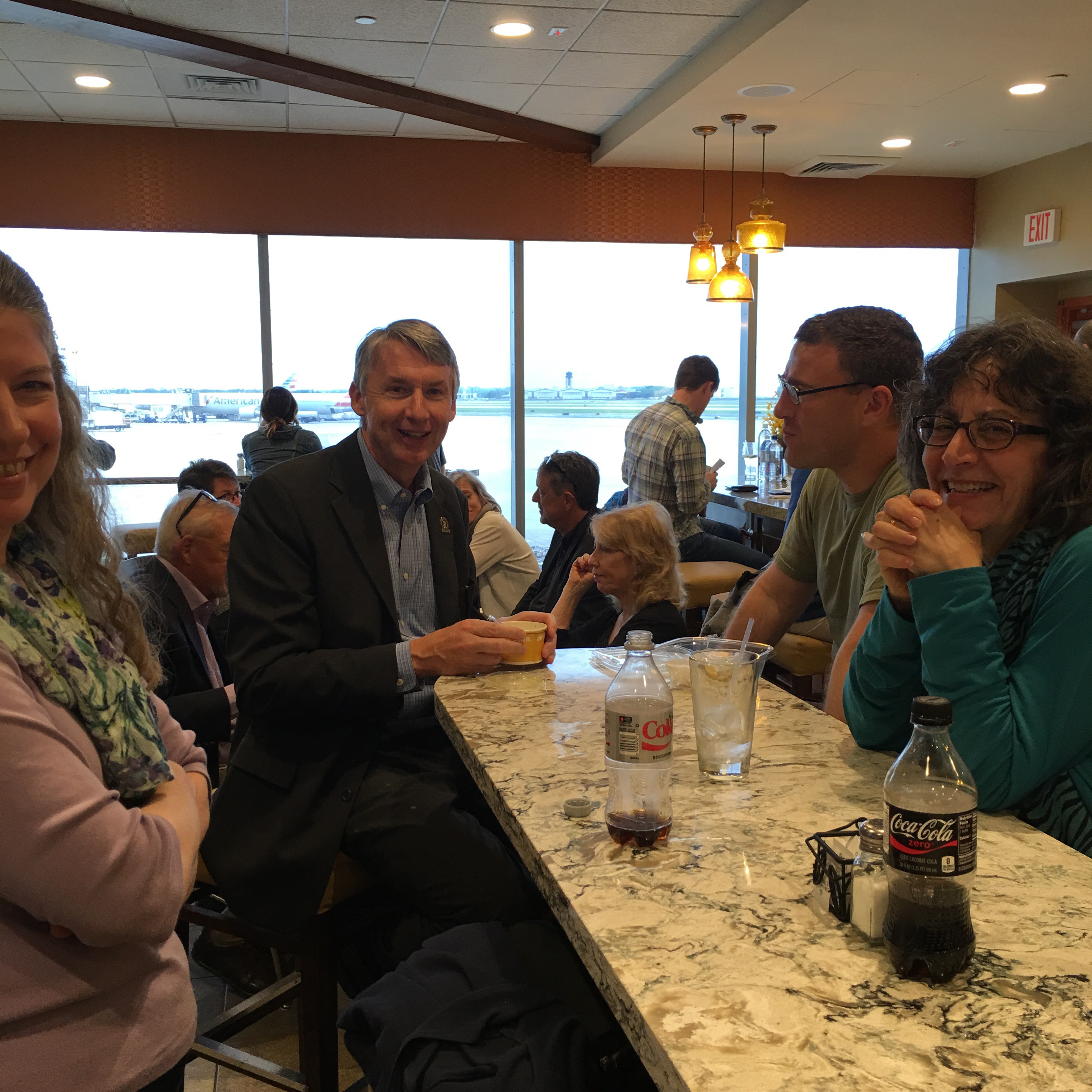In the spring of 1992, 40,000 citizens of Sarajevo–Catholic Croats, Christian Orthodox Serbs, and Muslim Bosniaks–peacefully protested against the political madness they saw unfolding around them. It was to no avail. Soon the city was surrounded by the Yugoslav People’s Army and radical Serb troops, save for a small thin line at the airport controlled by the UN. While Bosnia and Hertzegovina had declared their independence, Serb forces wanted Bosnian territory for a state of their own.
The siege of Sarajevo lasted from April 1992 through February 1996–significantly longer than World War II’s horrific siege of Stalingrad. In all, more than 11,500 people died, including 5,434 civilians. Today Sarajevo still shows visible scars from the war in the form of buildings with obvious damage and those with walls where the bullet holes have been patched. Once lined with trees, Sarajevo’s main boulevard–known as sniper’s alley during the war–is decidedly more barren as residents, desperate for warmth in the winter, cut them down during the war. Other wounds may be less visible. Both an Imam and a taxi driver we met had been 12 year old boys living in the heart of the city with their families when the war began. Like other children, they suffered many hardships, were often unable to attend school, and witnessed events that no child should have to see.
Dan, Shirley, Phil, and I took the opportunity yesterday to travel to a museum dedicated to the memory of Sarajevo’s lifeline during the war: a tunnel dug under a house south of Sarajevo that went beneath the airport and then into the city to deliver needed supplies.
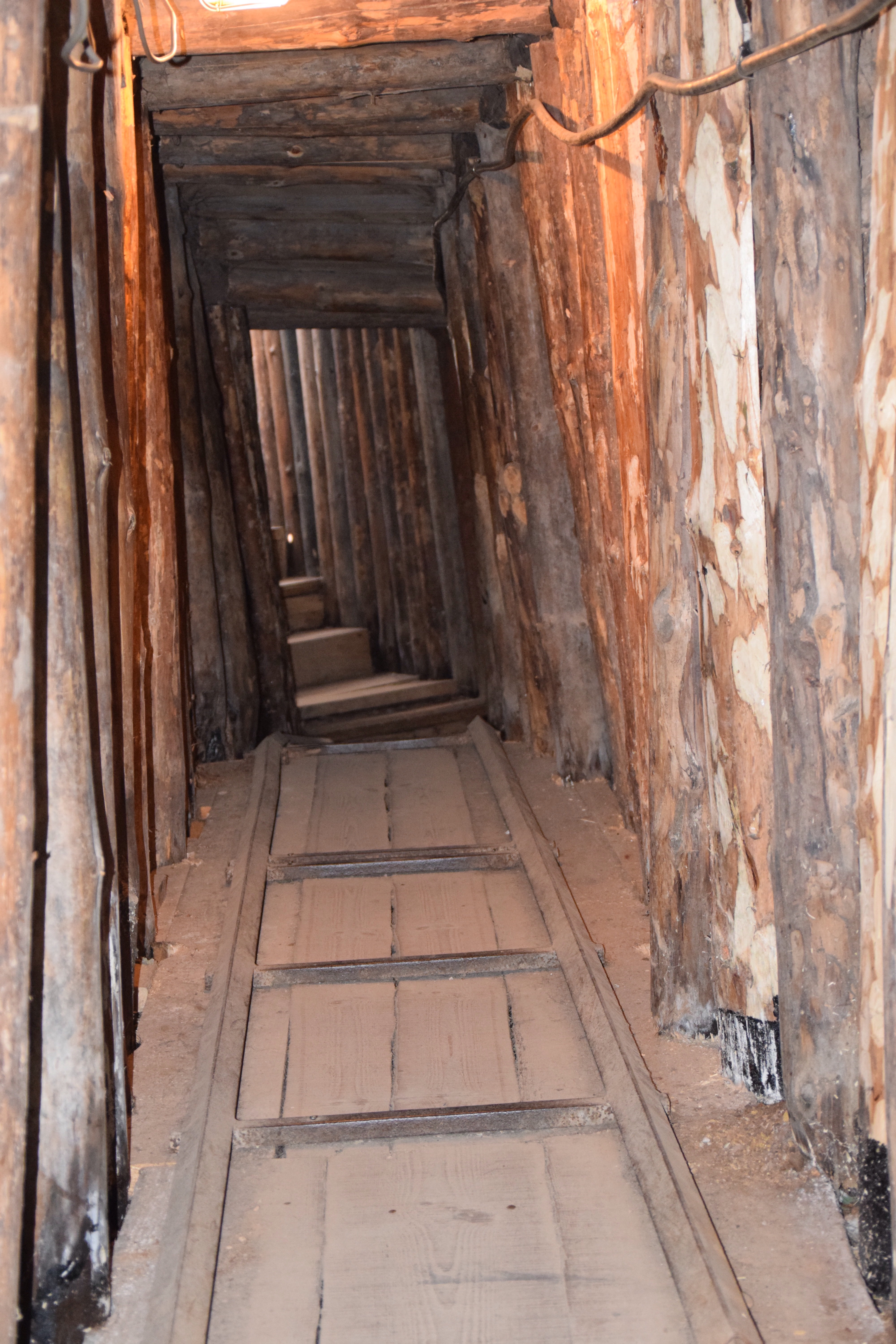
As we traveled to the southern part of the tunnel that still exists, our kind and gentle driver affirmed what we had read about the start of the war. Serbian and Yugoslav troops had first bombed factories to damage infrastructure and then a telecommunications tower to isolate the city. Today, the tower is back, but most of the factories have not returned. Instead, war-torn buildings are giving way to hotels. Our driver noted that the split government, led by multiple officials with 1 from each ethnic group (interestingly, the men and their security detail were seated next to us at our hotel’s cafe) is cumbersome, corrupt, and expensive, which has contributed to high unemployment among citizens. Muslims from Qatar and the United Arab Emirates are moving to affluent neighborhoods around Sarajevo, as well. The city’s physical, political, and demographic infrastructure is changing, but built on the remains of both the 1990s war and the region’s prior history.
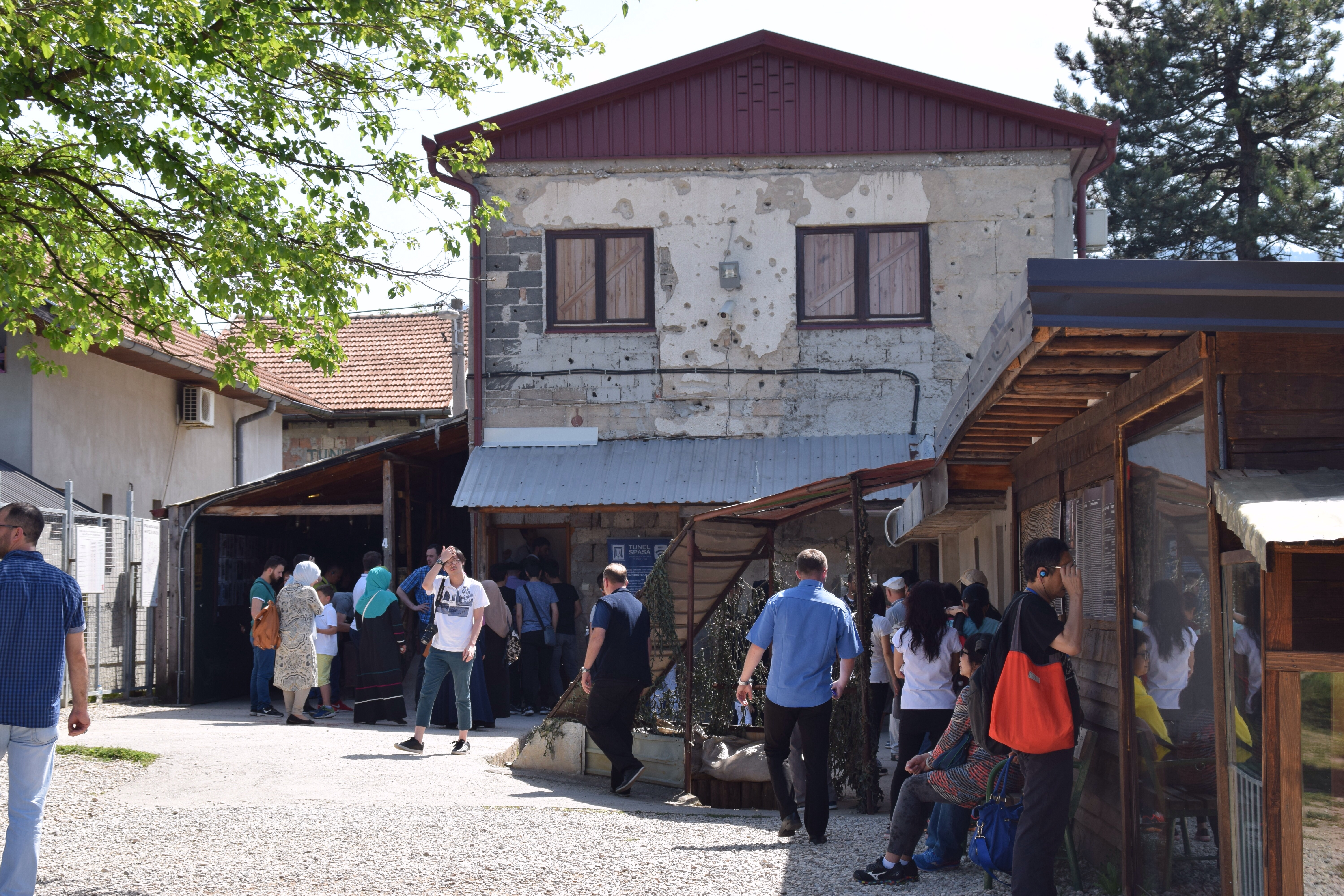
Even as many of the city’s inhabitants move on, however, others long to remember. At the tunnel, we learned that the family under whose home the tunnel was built first began preserving tools and other items associated with the tunnel when the government showed no interest in such a memorial. The house is now a small museum where you can walk down the stairs that led to the tunnel and then duck your head to move through a small portion of the tunnel itself that has not yet collapsed. Outside, visitors can see fields, then the airport, and then the city itself that depended so heavily on the tunnel during the war. We peered into a small gift shop, closed when we were there, and saw that metal work traditional to this area had been fashioned into relics for sale that pay homage to the “tunnel of hope.”
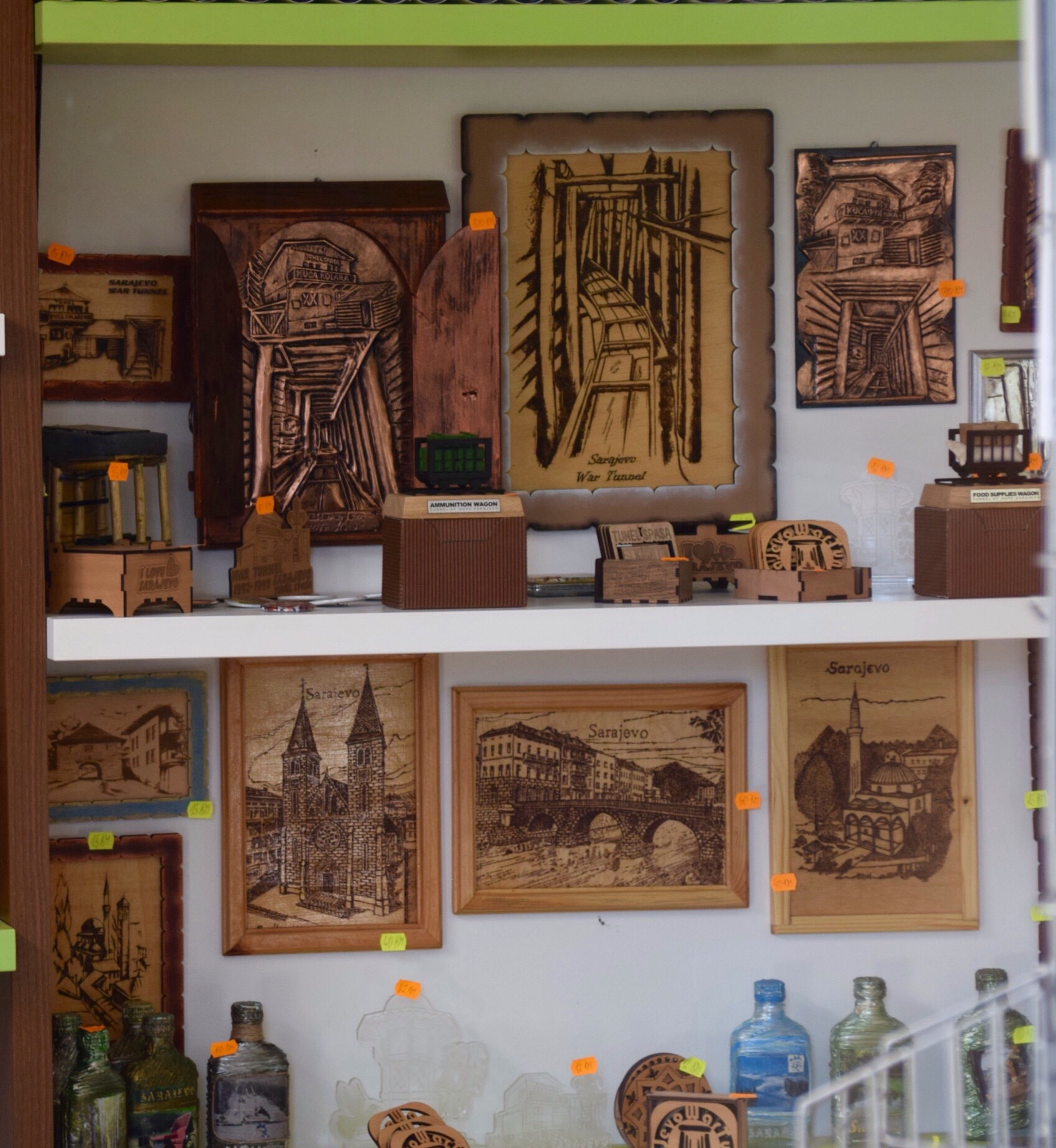
Perhaps this tug between the past and present was best illustrated yesterday in a cafe on Sarajevo’s main boulevard where we stopped for a quick lunch. The decor was composed of facades decorated with bullet holes, a new “re-membering” of the war, an ironic wink that the city and its residents are still standing. Whether future generations will note and/or appreciate the reference remains to be seen.
Denise
